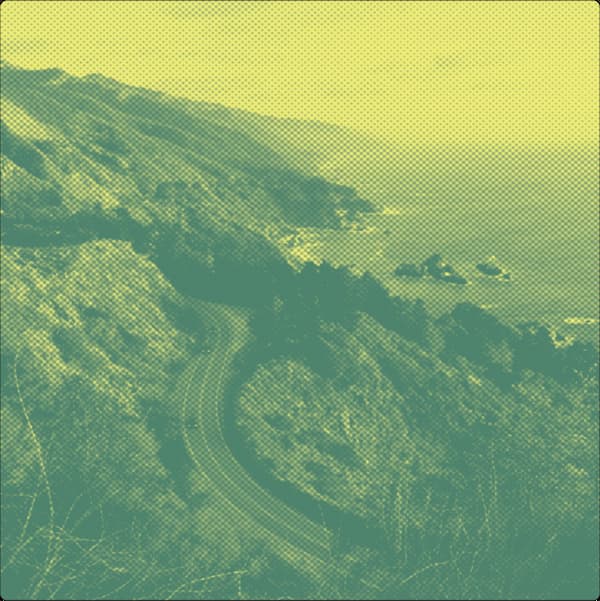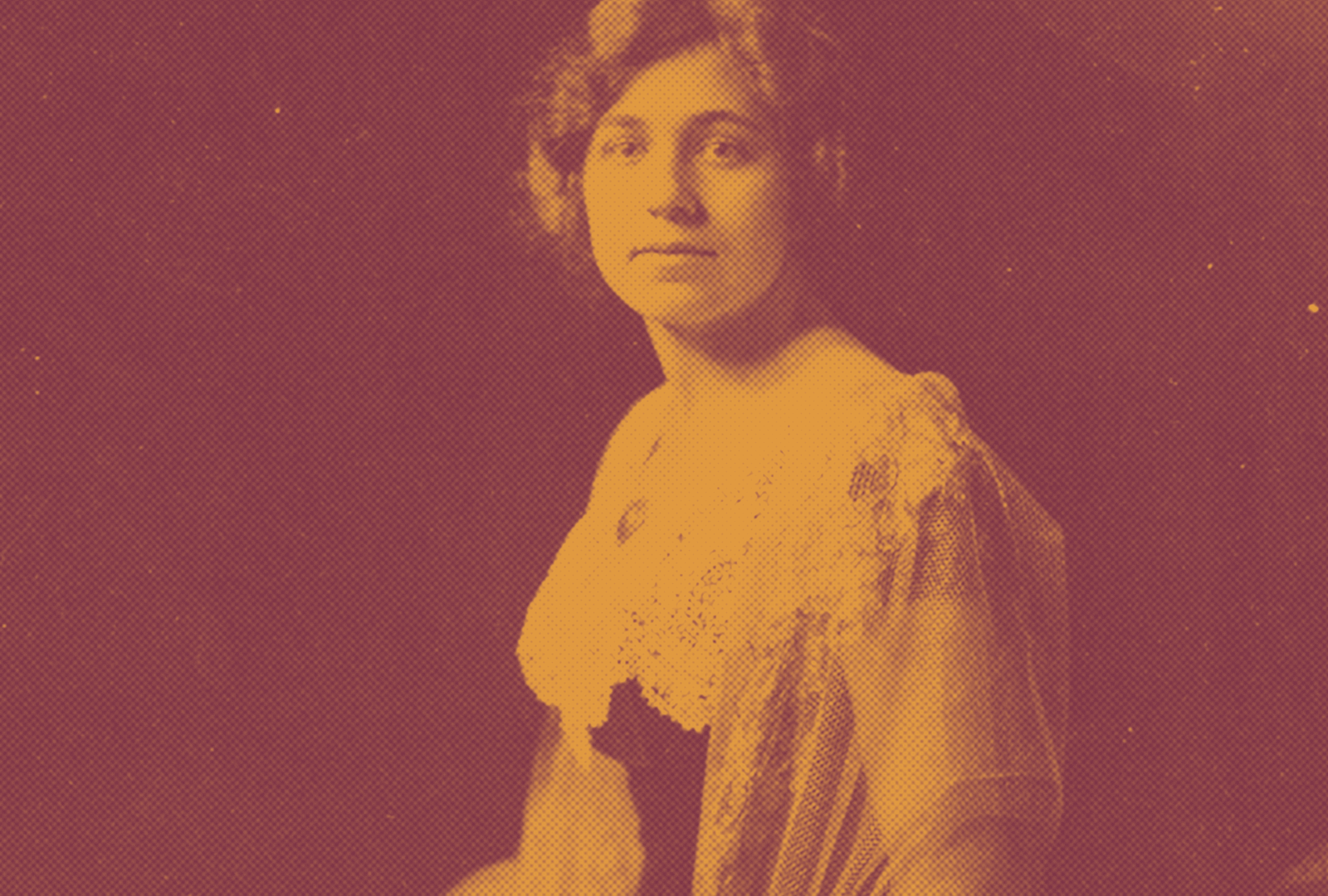By Daniel Corral
The Mystery of Mildred Couper
Santa Barbara-based Mildred Couper (1897-1974) is hailed as an early American quarter-tone composer, but she is an enigmatic figure in Southern California music. Classical musicians in the region might know her name, but few know her compositions.
Couper had a solid compositional background, including studying with Nadia Boulanger, who famously taught composers like Philip Glass, Aaron Copland, Quincy Jones, Astor Piazzola, Easley Blackwood, and Elliot Carter.
“I traded my o for u”
Discogs.com lists only one album that includes her music: Zeitgeist’s If Tigers Were Clouds: Eight Decades Of Women In Experimental Music, which includes her pieces Xanadu and Dirge. Beyond this, the only other publicly available recordings of her music are scratchy acetates that can be found in the Mildred Couper Papers at UC Santa Barbara. Some of these have been digitized and can be found on her granddaughter Greta Couper's website wingedsun.com.
The biography of Couper on wingedsun.com is so comprehensive that only a cursory one is needed here. Born Mildred Cooper in Buenos Aires, she and her mother moved to Europe, and she spent much of her childhood in Paris. There, she studied piano and composition and met American painter Richard Couper, whom she married and moved to New York with (she would later tell him “I traded my o for u”). When Richard died in the 1918 Spanish Flu pandemic, Mildred moved to Santa Barbara where many of her European friends were living. In Santa Barbara, Mildred devoted her energy to composition and was a very active teacher, concert presenter, and general musical presence.
Couper had a solid compositional background, including studying with Nadia Boulanger, who famously taught composers like Philip Glass, Aaron Copland, Quincy Jones, Astor Piazzola, Easley Blackwood, and Elliot Carter. A list of Couper’s works can be found at wingedsun.com. Couper is best known today for her forays into quarter-tone music, which is when an octave is divided into 24 equal steps rather than 12. In her time, quarter-tone music typically involved using two pianos, with one tuned down by ¼ of a tone. An example of this can be clearly heard in Henry Mancini’s main theme for the Audrey Hepburn film Wait Until Dark.
Other early 20th century composers known for their quarter-tone music include Ivan Wyschnegradsky, Alois Hába, Julián Carillo, and Charles Ives. It is interesting to note that all of these composers except Ives and Couper continued on to further subdivide the octave into smaller pieces (though according to Johnny Reinhard, Ives continued to explore microtonality through extended Pythagorean tuning). However, both Ives and Couper seemed to shy away from further (equal) divisions of the octave. While Ives shares his thoughts in “Some Quarter-Tone Impressions,” we are left to wonder about Couper’s motivation for not taking the next step to 48 or 72 notes per octave. Perhaps she was stymied by the tools available to her. While she did have two pianos to compose quarter-tone music with, Couper probably would have needed access to different physical instruments capable of playing further divisions of the octave.
Her best-known compositions are the two quarter-tone pieces on the Zeitgeist recording: Xanadu and Dirge. The score for Dirge was originally published in Henry Cowell’s New Music quarterly and the piece was presented by Evenings on the Roof (precursor to Monday Evening Concerts) in 1951, played by Couper and Ingolf Dahl.
Xanadu was originally composed in 1930 for a production of Eugene O’Neill’s Marco Millions.
The "Godmother" of Ptolemy
Couper taught regularly in Santa Barbara, and was one of the original faculty at the Music Academy of the West. Throughout her tenure in Santa Barbara, UCSB’s local newspaper El Gaucho regularly listed Couper’s educational activities, including presenting student concerts and adjudicating student competitions. Couper was also a mentor to younger microtonalists. Composer Harry Partch made pilgrimages to Santa Barbara to see her. In his book Bitter Music, he refers to her several times as “Godmother,” meaning the Godmother of his first homemade instrument the Ptolemy.
Microtonalist Ivor Darreg—who coined the term “Xenharmonic” and has become a sort of figurehead for independent microtonality—also learned from Couper. In the 1940s, Couper lent Darreg her copy of Ivan Wyschnegradsky’s Manual of Quarter-Tone Harmony, which the autodidactic Darreg then translated from French to English. While his translation wasn’t published until 1974, it is the earliest known English translation of Wyschnegradsky’s text, predating the Underwolf translation by ¾ of a century.
Couper was clearly a musical presence in Southern California, and is often listed as an early American pioneer of quarter-tone music. So why isn’t her music better known today? One important aspect of this question is gender. For a composer who was a woman at the turn of the 20th century, it was much more difficult to get performances than it was for men.
Couper was the President of the Music Society in Santa Barbara and a member of Henry Cowell’s New Music Society. She regularly hosted concerts at her Monteverde estate (named after the composer), and programs and musicians presented by Evenings on the Roof would often be brought to Santa Barbara for a repeat performance.
As Pauline Oliveros said in her 1970 New York Times Article, “it is still true that unless she is super‐excellent, the woman in music will always be subjugated, while men of the same or lesser talent will find places for themselves.” A 2008 update by Lisa Hirsch on NewMusicBox shows that this is still slow to change. Still, for someone as connected to the music world as Couper was, it’s surprising that there are only 2 pieces of hers that have been professionally recorded on anything other than acetates.
Geography could be another factor. Throughout the 20th century, it was normal for the East coast-centric classical music establishment to deride or ignore what was happening on the west coast. As critic Alan Rich wrote in New West Magazine in the 1980s, “A depressing amount of the energy in the East, in fact, is expended on the avoidance of new music, especially of music from outside a circumscribed area that has New York as its center.” Beyond being on the west coast, Couper was in Santa Barbara—a beautiful place that was not known in the first half of the 20th century as a hotbed of musical innovation. This has since changed, with UCSB bringing in people like Curtis Roads and the late Clarence Barlow.
A Hearty Reappraisal
Beyond Couper’s quarter-tone inclinations, it is a stretch to say that her music was wildly innovative or adventurous beyond traditional bounds. However, this doesn’t mean that her music is not worth a hearty reappraisal. Elsewhere in Oliveros’ NYT article, she says “critics do a great deal of damage by wishing to discover ‘greatness.’ It does not matter that not all composers are great composers; it matters that this activity be encouraged among all the population, that we communicate with each other in non-destructive ways.” Couper’s quarter tone music doesn't have the flashy modernist radicalism of Wyschnegradsky’s 24 Preludes, which revel in and show off quarter-tone chromaticism and clustery chords. However, to my ears it is still very expressive and well-constructed. Regardless, it is historically important that she was doing it when and where she was. A revival of her work might lead by example in communicating in non-destructive ways.
About the Author
Daniel Corral is a composer/performer born and raised in Eagle River, Alaska but now based in Los Angeles. In addition to his creative practice, Corral is Operations Director of the PARTCH Ensemble, on the board of MicroFest LA, and currently researching the history of microtonality in Southern California as part of his doctoral studies at UCSD.


